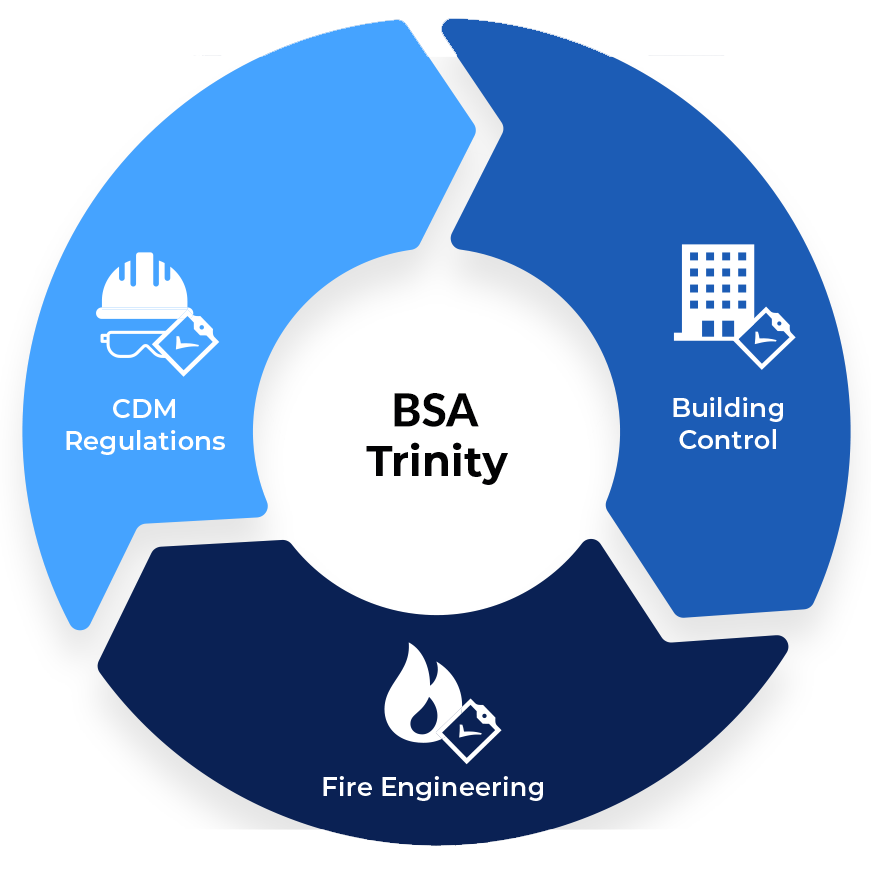The Building Safety Act and the Principal Designer role.
Introduction
The Building Safety Act is a landmark legislation in the UK that aims to revolutionize the way buildings are designed, constructed, and managed, with a primary focus on enhancing safety and accountability across the sector.
It was granted Royal Assent on 28 April 2022 and came into force October 2023. Further requirements and implications are to be implemented from April 2024.
The Act has created New Bodies: The Act creates three new bodies to provide effective oversight of the new regime:
The Building Safety Regulator,
The National Regulator of Construction Products, and;
The New Homes Ombudsman.
The Building Safety Act 2022 aims to improve the safety and quality of buildings in England, especially those that are classified as higher-risk buildings (HRBs). The act introduces a new regulatory regime that requires two principal duty holders to be appointed for any project that requires building regulations approval: the principal designer and the principal contractor.
What is the BSA Principal Designer?
The principal designer is the person or organisation who is in charge of the design work during the design phase of the project. The principal designer must plan, manage, monitor and coordinate the design work to ensure that it complies with all the relevant requirements of the building regulations, such as fire safety, structural integrity, accessibility, energy efficiency and so on. Although similar in name the responsibilities are not to be confused with the PD role under CDM 2015, which are explained below.
The roles and responsibilities of the Principal Designer under the Building Safety Act and the Construction (Design and Management) Regulations 2015 (CDM 2015) are very different. Rather than identify all the different roles and responsibilities it is perhaps easier to think about the focus of each;
Focus: The focus of the Principal Designer in the Building Safety Act is primarily on compliance with building regulations. In contrast, the Principal Designer under CDM 2015 focuses on health and safety during construction.
The difference reflects the distinct objectives of the two sets of regulations, with the Building Safety Act focusing more on building regulations compliance, and CDM 2015 focusing more on health and safety during construction.
Number of Principal Designers: There could now be two Principal Designers on a project: one for CDM compliance and another for compliance with the Building Safety Act.
So what are the BSA Principal Designer’s key responsibilities?
The Principal Designer under the Building Safety Act has several key responsibilities:
1. Planning, Managing, and Monitoring Design Work: The Principal Designer is required to plan, manage, and monitor the design work during the design phase.
2. Coordinating Design Work: The Principal Designer must coordinate matters relating to the design work comprised in the project.
3. Ensuring Compliance with Building Regulations: The Principal Designer must ensure that all reasonable steps are taken to ensure that the design is in compliance with Building Regulations. And that if the building work is built in accordance with that design, the building work would be in compliance with all relevant requirements.
These relevant requirements include those listed in Schedule 1, from Part A – Structure, through to Part S – Infrastructure for the Charging of Electric Vehicles, as well as Regulation 7, governing materials and workmanship.
What are the Client’s responsibilities?
The client is the person or organisation who commissions the project and has control over its budget and timeframe. The client must appoint a suitable principal designer and a principal contractor for the project, and ensure that they have the necessary skills, knowledge, experience and behaviours to carry out their duties. Competency as defined by the HSE can be found here with a link to the Principal Designer PAS 8671 below and available to download.
The client must also provide them with any relevant information that might affect the design and construction of the project, such as the existing health and safety file, the fire risk assessment, the building safety case report and so on. The client must also cooperate with the BSR and the AP, and notify them of any changes to the project or the duty holders.
Conclusion
The principal designer and the client have important roles and responsibilities under the Building Safety Act, and they must work together with the other duty holders, such as the designers, contractors, APs (Accountable Person’s) and the BSR (Building Safety Regulator), to ensure that the project is designed and built in a safe and compliant manner.
The act also introduces new sanctions and penalties for those who fail to comply with their duties, such as fines, imprisonment, prohibition notices and enforcement orders.
Therefore, it is essential that the principal designer and the client understand their obligations and follow the best practices to deliver a high-quality and safe building.



